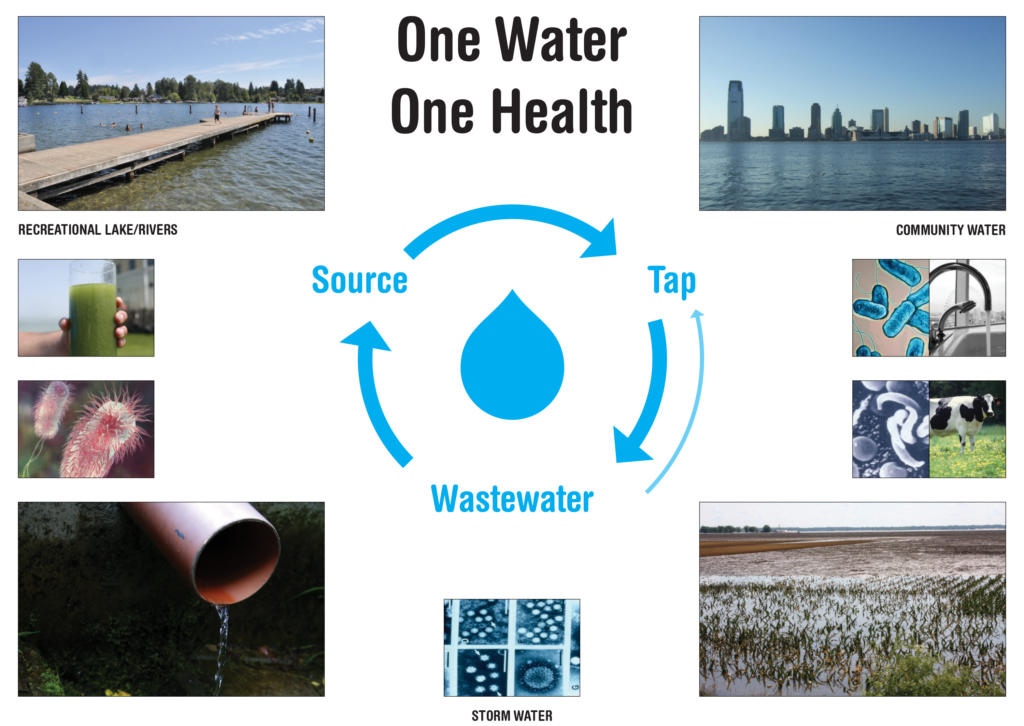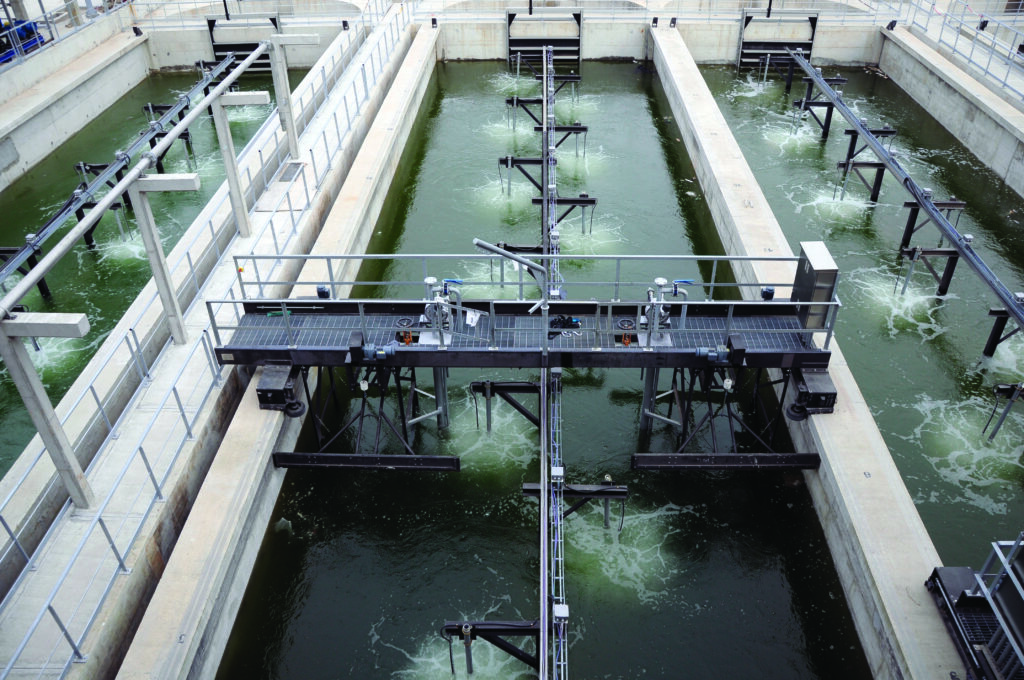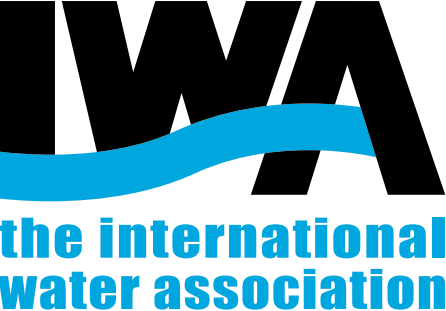Chartering the Course to Water Wisdom
The UN Sustainable Development Goals (SDGs) provide a framework to address water challenges and put water at the center of the global agenda on sustainable development, but greater awareness is still needed on the hot topics, innovations and global trends in water science, research and management.
Climate change, rapid urbanization, increasing consumption and demand for food and energy will leave few countries and communities unaffected. The global water challenge is unprecedented: demand for water and sanitation services is greater than it has ever been. The UN SDGs put water at the center of the global agenda and provide a framework to address water challenges. This presents opportunities for the water sector to develop innovative solutions and to scale-up best practices. The Global Trends and Challenges in Water Science, Research and Management compendium draws upon the expertise of the Specialist Groups in the International Water Association (IWA) which includes the hot topics, innovations and global trends in water science, research and management that will help solve water challenges. The compendium highlights a diversity of approaches from detailed technical and scientific aspects to more integrated approaches, including booming bio-technologies, water and health, resources recovery from water, smart utilities and urban resilience, which are highlighted below.
A revolution in water and wastewater systems with bio-technology and DNA-tools
This is a fantastic time to work in the field of environmental bio-technology! The novel DNA-tools are revolutionizing our capabilities to understand the microbial systems and they provide the basis for informed actions in all areas, where microbes are key players: from human health to resource recovery.
Per Halkjær Nielsen

The rapid development of new DNA technologies now allows us to study microbial communities in much greater detail.
The development in DNA sequencing technologies is advancing impressively: soon we will be able to identify all microbes, including protozoans, on-site in any ecosystem within minutes and at a very low cost. “Online” surveillance and controlling microbial communities will be possible as it will be to obtain complete genomes of all important microbes in relevant ecosystems, providing information about identity, physiology and interactions, leading to a much better understanding of the entire ecosystems. We still need to be predictive and apply selective principles for controlling certain populations and efficient management of the microbial communities. Wastewater treatment is becoming part of the circular sustainability development that integrates energy production and resource recovery into clean water supply. Microbial biotechnology, along with other technologies, is essential in this development with exciting perspectives in optimizing existing systems and developing new ones. #
One Water One Health is Supported by Health-Related Water Microbiology Science
Water quality is health. Our global health (as the bio-health of the planet) is at risk like no other time in history. Water quality is depleting and is a complex wicked problem. The status of the water quality data is dismal, but we now have the tools to tackle this problem.
Joan Rose
Water quality is deteriorating in rivers, lakes and marine coastlines, groundwater and water at the tap because of human-activity and due to the increasing number of agricultural-based animals (FAO reports animal manure is now the number one cause of pollution) affecting the degradation of natural infrastructure. Hundreds of microbial hazards, antibiotic resistance, and toxic algal blooms (more than 150) cause waterborne diarrhea heart disease, kidney failure, cancer, reactive arthritis, paralytic disease and pneumonia. Globally, unsafe drinking water, inadequate water for hygiene, and lack of sanitation contribute to about 88% of deaths from just diarrheal diseases (about 2,200 children dying daily).

Health-related water micro-biology is advancing with:
- microbial risk assessment frameworks and the necessary data to address exposure assessment and hazards control
- the use of next generation sequencing to define the water micro-biome in all water environments
- improved water quality diagnostics in particular by promoting “Microbial Source Tracking”
- the global mapping of pathogen emissions and concentrations
The “One Water” concept is highlights the importance of addressing climate change impacts on water scarcity and more specifically on flooding, which cost up to $432 billion/year (Lloyds City Index of Risk). One Water is needed to address the SDGs and improve global wellbeing. We are building interactive databases now using microbiological skill sets, technical and scientific developments, providing quantitative information on pathogens in water and global maps of emissions, concentrations and risk.

New tools allow us to map and diffuse sources and specific hazards improving targeted monitoring and management strategies. The data will assist investments to move sewage treatment toward resource recovery which will provide energy, nutrients and fresh water. Implementing a risk-based approach with adequate data will be more important than ever to mitigate effectively the impacts of an aging infrastructure (or lack thereof) and the global changes that are now occurring. Recommendations to improve the bio-health of the planet include:
- Support the development of water diagnostic laboratories around the world
- Use the latest technologies to understand spatial and temporal changes in pathogen concentrations and removals by innovative technologies
- Develop microbial databases for all waters
- Support data gaps in developing regions of the world
The Boundaries of Resource Recovery from Water
There is an urgent need to have more and better views on the hidden and externalized costs of what the reclaimed materials have to compete with.
Willy Verstraete
We all have our moments of excitement: a new process route, a new way to distil, strip, filter, precipitate, (bio)synthesize. We are convinced of the necessity to stop the dissipation and recover resources. Yet the harsh part comes when we have to deal with the counterfactuals: what are the normal routes and what are the characteristics of the products which reclaimed materials have to compete with (including hidden externalized environmental costs). For instance, it has been estimated that the externalized costs of nitrogen fertilizers are of the same order as the current cost price to the farmer. Clearly, such facts are needed to better support recovery lines for nitrogen from water and to fuel the debate against the conventional approach of nitrogen removal via the nitrification-denitrification-anammox process lines.
But recovery has another boundary. At regular intervals, we see that the limits of analytical detection are extended. Suddenly, one discovers a compound or an agent in a food or feed at values which are statistically correct, but at levels which were not measurable before.Yet, the facts indicate that the public has been exposed to a compound which is not allowed in the food chain or the environment because it is not listed and hence no concentration whatsoever is acceptable. At that moment, the regulators point to the producers and quite often the responsible politician resigns. Yet, in numerous cases plenty of calculations clearly indicate that any citizen being in contact for a whole lifetime with the compound at the levels found still does not show negative effects. Such situations have been documented, for instance for PCBs and dioxins; they will occur more and most of us comprehend the irrationality of the cases. Clearly, in the domain of recycling, we are aware that a multitude of trace compounds can be present in what we recover. There is an urgent need if we believe in the value of the circular economy, to set up risk assessment schemes and models for adequate decision-making at the governmental level to preempt the next outbreak of irrational fear of contamination.
Embracing the Digital Future
As all industrial sectors, water utilities are also going digital. And by digital, we mean not only digitizing the interaction between the utility and the citizens, but also transforming the operating processes through the introduction of digital-enabling technologies.
Carlos Campos
Four value-creation drivers explain this evolution: 1) reducing overall operating costs, which introduces both instrumentation and operation hypervisors capable of integrating multiple data sources, all relevant for optimum operations; 2) ensuring sustainable resource utilization of water and energy – this explains why we see many utilities introducing energy optimization expert systems in their sustainability roadmaps; 3) under severe CAPEX restriction, water infrastructure assets need to do “more with less”, which means optimizing asset utilization and this is being done increasingly through the use of both all asset data and dedicated analytics; and 4) enhancing consumer experience beyond traditional customer care, we see the emergence of applications, for example, to interpret meter data to benchmark water consumption.

As in any transformation process, adopting digital solutions requires an adoption process which includes barriers identified by utilities when implementing these solutions, such as: the interoperability of the devices and systems in the vertical stack, security and data privacy, uncertain return on investment, lack of maturity of some technologies, and lack of knowledge and skilled workers. Our experience shows that the best strategy to overcome these barriers is to develop the proper Pathfinder Projects were the various technologies can be proven, their value demonstrated, and its operation learned by operators: Welcome to the Utility of the Future.
Urban Resilience: Building Water-Wise Cities
One way to test the resilience of an urban area is to see how it deals with water – how it functions when it has too much, or too little.
Paul Fleming
Urban resilience is a means to explore the capacity of systems, organizations and people of an urban area to anticipate, manage and adjust to chronic stresses and acute shocks. Water systems attempt to make reliable what is inherently variable and therefore are great test cases for resilience given their role as connectors for public health, economic development and urban vitality but many challenges constrain the contribution of water systems to urban resilience:
Urban areas with reliable water systems can face affordability issues regarding the replacement of aging infrastructure and the need to meet regulations and community needs while under-served areas grapple with overcoming impediments to achieving reliable access to water and sanitation. Urbanization contributes to a “tyranny of now” mindset where immediate demands precede longer term thinking while the altered water cycle and extreme events introduced by climate change raises questions about what future conditions will water systems need to adapt to? The differentiation of water into separate regulatory, governance and management silos also constrains innovative approaches that rely on leveraging integrated approaches to water management.
The transformative implications of decentralization, which is gaining ground in the energy sector, has yet to play out in the water sector.
These challenges are loaded with opportunities to reimagine and reframe water management and urban resilience. An awareness of the fundamental relationship between land management and water management is driving strategies that make water management not just a water utility’s responsibility but also critical component of land use and urban planning. Water utilities, recognizing that the projected climate-driven changes in extreme events, rainfall intensities and droughts have serious implications, are collaborating actively with each other and the research community to co-produce actionable science, assess how to embrace uncertainty and plan for multiple plausible futures.

The transformative implications of decentralization, which is gaining ground in the energy sector, has yet to play out in the water sector. Strategies for managing water at the parcel or neighborhood scale have been embraced by some utilities and developers with the potential to complement the traditional centralized system through nested systems and built-in redundancy. Partnership models that combine different actors with distinct but complementary interests offer a great opportunity for joint investments to bring multiple benefits for society, the environment and business – the triple bottom-line of sustainability.

The International Water Association is a global knowledge hub for water professionals and anyone concerned about the future of water. It has sixty-year heritage connecting water professionals worldwide to find solutions to the world’s water challenges as part of a broader sustainability agenda. As a non-profit organisation with members in more than 130 countries, the IWA connects scientists to practitioners and communities so that pioneering research delivers sustainable solutions. It further fosters technological innovation and drives best practice through international frameworks and standards.